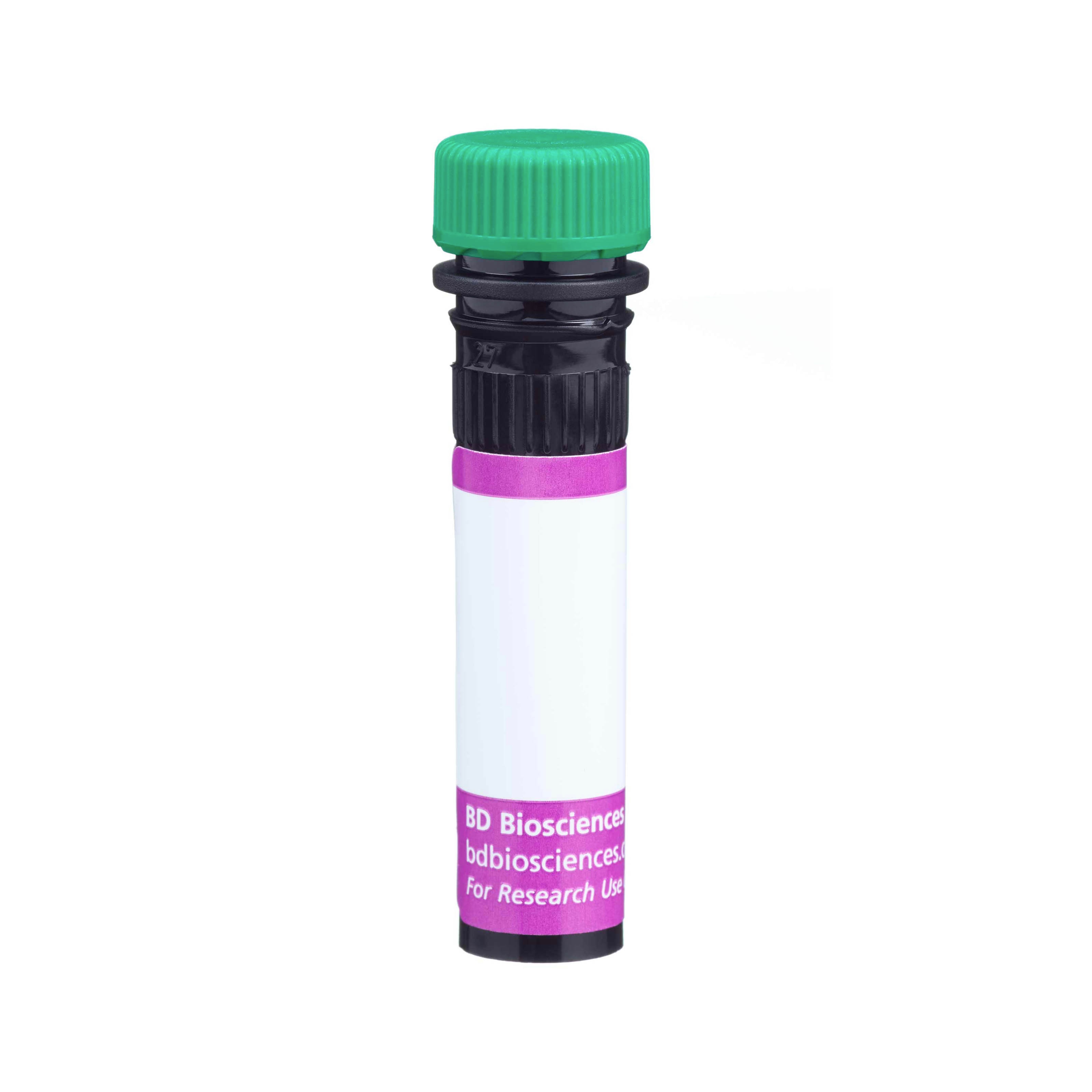



 下载产品说明书
下载产品说明书 下载SDS
下载SDS 用小程序,查商品更便捷
用小程序,查商品更便捷



 收藏
收藏
 对比
对比 咨询
咨询















参考图片
Two-color flow cytometric analysis of Ki-67 expression by proliferating MOLT-4 and human peripheral blood mononuclear cells (PBMC). Proliferating MOLT-4 cells and predominantly noncycling PBMC were fixed and permeabilized separately with 70% ice cold ethanol, washed, and stained with BD Horizon™ BV510 Mouse Anti-Ki-67 antibody (Cat. No. 563462) according to the BD Biosciences support protocol, "Flow Cytometry Staining Protocol for Detection of Ki-67." The cells were then counterstained with BD Via-Probe™ Cell Viability Solution [Cat. No. 555815/555816; contains 7-Amino-Actinomycin D (7-AAD)] to stain DNA. Two-color flow cytometric dot plots showing the correlated expression patterns of 7-AAD staining versus Ki-67 were derived from gated events with the forward and side light-scatter characteristics of intact MOLT-4 cells (Left Panel) or PBMC (Right Panel). Flow cytometric analysis was performed using a BD LSR™ II Flow Cytometer System.
Two-color flow cytometric analysis of Ki-67 expression by proliferating MOLT-4 and human peripheral blood mononuclear cells (PBMC). Proliferating MOLT-4 cells and predominantly noncycling PBMC were fixed and permeabilized separately with 70% ice cold ethanol, washed, and stained with BD Horizon™ BV510 Mouse Anti-Ki-67 antibody (Cat. No. 563462) according to the BD Biosciences support protocol, \"Flow Cytometry Staining Protocol for Detection of Ki-67.\" The cells were then counterstained with BD Via-Probe™ Cell Viability Solution [Cat. No. 555815/555816; contains 7-Amino-Actinomycin D (7-AAD)] to stain DNA. Two-color flow cytometric dot plots showing the correlated expression patterns of 7-AAD staining versus Ki-67 were derived from gated events with the forward and side light-scatter characteristics of intact MOLT-4 cells (Left Panel) or PBMC (Right Panel). Flow cytometric analysis was performed using a BD LSR™ II Flow Cytometer System.







 危险品化学品经营许可证(不带存储) 许可证编号:沪(杨)应急管危经许[2022]202944(QY)
危险品化学品经营许可证(不带存储) 许可证编号:沪(杨)应急管危经许[2022]202944(QY)  营业执照(三证合一)
营业执照(三证合一)